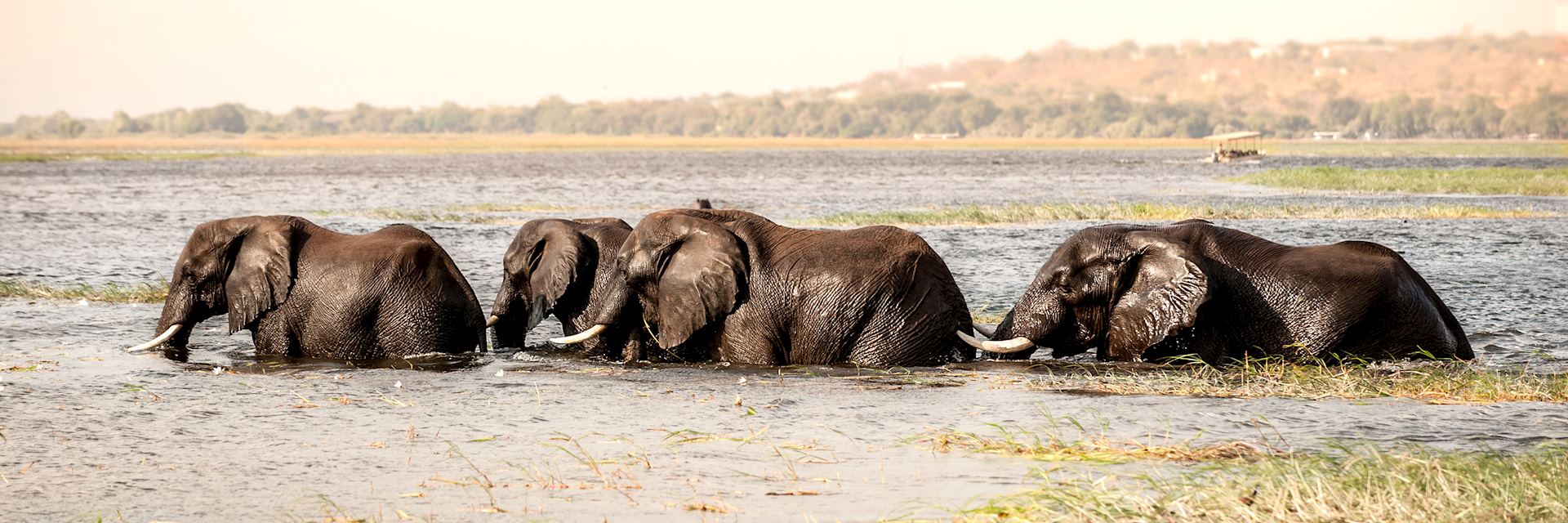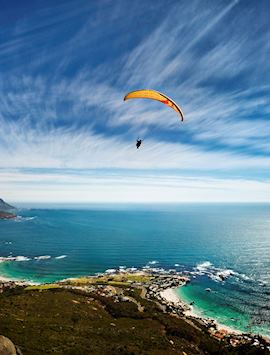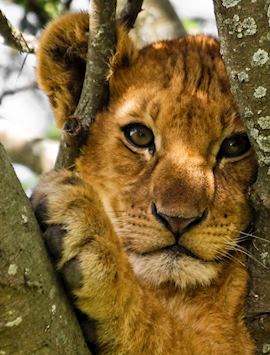In your mind, you know what you want from a safari — big skies, open plains scattered with wildlife, waterways awash with birdlife. But which place ticks all of your boxes? Whether your priority is finding somewhere completely remote and untamed, seeing as many of the Big Five as possible, or keeping your activities varied, our specialists can help to whittle down Africa’s many safari options.
Below, we’ve summed up six of Africa’s best areas for a safari based on our specialists’ own experiences to help you decide where to go, whether it’s your first venture into the bush or you’re already hooked.
Greater Masai Mara, Kenya
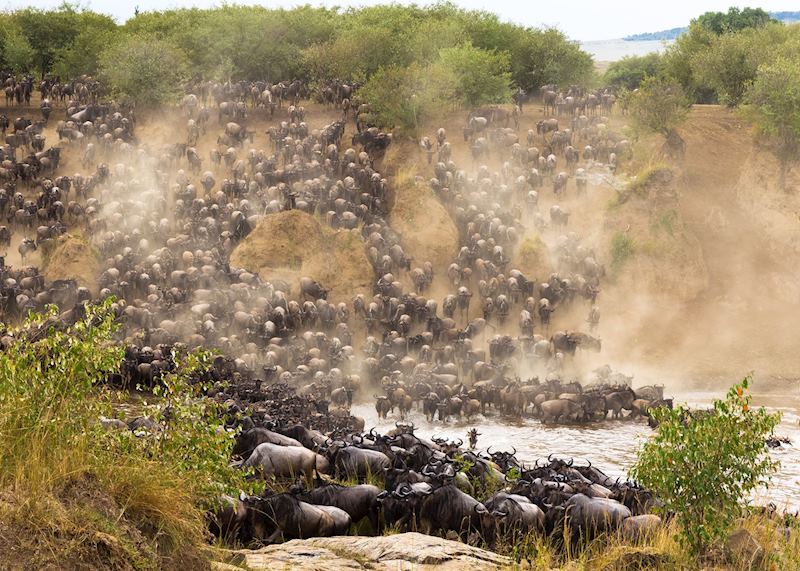
Boasting one of the highest concentrations of wildlife on the planet, the Masai Mara is well and truly nature’s territory. Among the horizon-touching plains, you can be surrounded by thousands of wildebeest, zebra and antelope. These draw in predators — you’re very likely to encounter lion here, as well as cheetah.
Your time in the Mara is mostly spent on morning and afternoon game drives. But, if you stay on a community-owned conservancy bordering the main reserve, you can usually head out on bush walks that home in on the ecosystem’s smaller species, continue your game drives after dark for a chance to see nocturnal species, and visit Maasai villages for a glimpse of the local culture. Meanwhile, a dawn hot-air balloon safari gives you a bird’s-eye perspective over the bush.
You’ll encounter far fewer vehicles in the conservancies than in the main reserve, and just four or five are permitted at any one wildlife sighting, making for a more peaceful and authentic safari experience.
Safari specialist DavidFor me, being in the Masai Mara isn’t about the specific animal sightings. It’s about simply being there, experiencing the bush, whether you’re sitting by the river watching wildlife come and go or lying in your tent at night listening to the sounds of zebra passing through camp and the distant roars of lion.
Best time to go: Find out the best time to visit Kenya.
Greater Kruger Area, South Africa
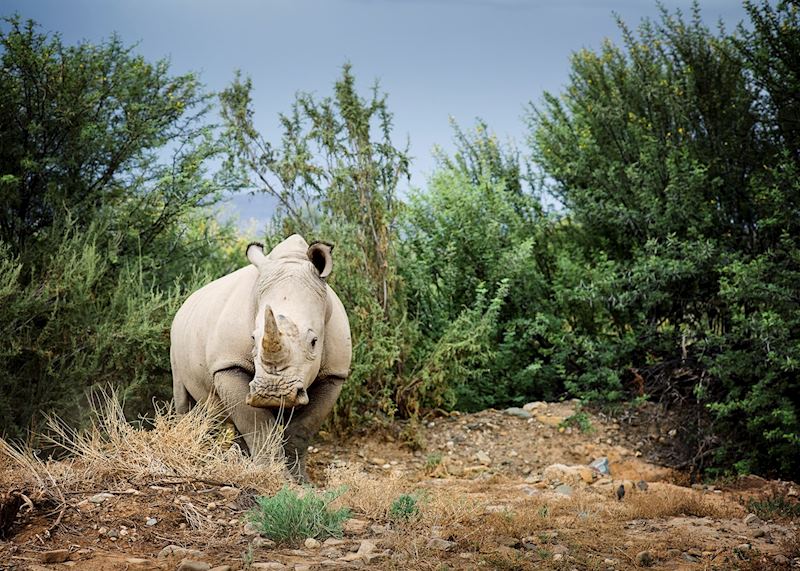
Kruger National Park is one of the most accessible wildlife areas in Africa, allowing for self-drive safaris as well as classic guided drives. Wildlife lives here in such high numbers that you can turn a corner and have every chance of seeing any member of the Big Five, a cheetah or a pack of wild dog.
The park’s ease of access does mean that it gets busy. For a more exclusive experience, stay on one of the private reserves next to the Kruger, such as Sabi Sands Game Reserve or Thornybush Game Reserve. They’re unfenced, so wildlife is free to move between them, but only those staying on the reserves can enjoy activities there.
Camps and lodges in these reserves are of a high quality, and you can take your safari beyond just game drives, heading out on bush walks with highly experienced guides who can effortlessly identify birdsong, animal tracks and plants.
Safari specialist MargaretGame drives are so exciting in the Greater Kruger — you don’t have to work as hard to find animals, they’re just there, which makes it a great place for a first safari. We followed a young female cheetah who seemed to be behaving erratically, sniffing the air and walking with purpose. It was soon clear why when she ran up to another female — her mother. Seeing their excitement at being reunited was heart-warming.
Best time to go: Find out the best time to visit South Africa.
The Okavango Delta, Botswana

Glistening reed-fringed waterways, green, bushy landscapes and flowing rivers populated by noisy hippo pods: the Okavango Delta is an emerald oasis in the heart of Southern Africa. You can explore it by motorboat, traditional mokoro (wooden canoe), game drives along the banks, and on foot, making it one of the most varied safari destinations.
Safaris here feel more exclusive than elsewhere — you’ll usually stay on private concessions with just a handful of intimate camps and lodges, so you’ll rarely see another vehicle. And, the guides are excellent — most are local and all share a passion for and knowledge of their country’s wildlife, from the biggest elephant to the tiniest insect.
As for the wildlife? Expect to see plenty of elephant, lion and buffalo. Leopard can sometimes be spotted lounging in the branches of sausage trees, and keep your eyes peeled for wild dog. One of the highlights is the delta’s birdlife — lilac-breasted rollers sit proudly on wizened tree stumps, bee-eaters and kingfishers line up on the reeds and fish eagles shriek their presence overhead.
Safari specialist HannahBeing on the water as the sun is setting, with no other boats around and a drink in hand, is possibly the most peaceful way to end your day — drifting along listening to the sounds of the bush under a pink-and-orange-tinged sky is enough to convince you never to come home.
Best time to go: Find out the best time to visit Botswana.
Hwange National Park, Zimbabwe

With its open plains scattered with patches of dense woodland, Hwange National Park appeals to all manner of wildlife, including more than 30,000 elephant, lion, leopard and wild dog.
This is despite there being no natural surface water. Instead, manmade waterholes are pumped with groundwater, and you can watch as wildebeest, buffalo, Burchell’s zebra and a myriad of birdlife take advantage of these miniature oases.
Many of the camps here have their own waterholes, some of which started out as plunge pools for guests until they were taken over by thirsty elephant. Now, you can sit on a lounger and watch as elephant come to drink just steps away.
You can take game drives through the park, focusing on the limited water sources. Horse riding is also offered from some camps, as well as community visits that demonstrate the efforts being taken to reduce human-wildlife conflict. However, Zimbabwe is best known for its walking safaris, with guides specifically trained in reading the land and its wildlife.
Safari specialist HarrietI don’t think I’ve ever felt closer to elephant than during my time in Hwange. One afternoon, I was sitting in a sunken hide positioned next to a waterhole. Within minutes of the pump being turned on, a herd of around 15 elephant trudged down to the water. The cleverest knew to drink straight from the pipe, where the water is cleanest.
Best time to go: Find out the best time to visit Zimbabwe.
South Luangwa National Park, Zambia

Off-radar compared to many other safari destinations, South Luangwa National Park is one of the best places on the continent for seeing leopard, and that’s just for starters. Buffalo, elephant, hippo and brightly plumed birds populate the banks of the Luangwa River, packs of wild dog and prides of lion can occasionally be seen heading out on a hunt, and zebra, wildebeest and various antelope species graze on the open savannah.
The park’s also known for being the birthplace of walking safaris. Every camp offers the chance to explore on foot with highly qualified guides. Some focus purely on walks, giving you a chance to see the bush in a whole new light.
Take your experience that bit further by embarking on a mobile safari. You walk during the day to different locations in remote areas of the park, where a simple tented camp will be ready and waiting to rest your weary feet.
Safari specialist RussellI never thought I’d be interested in the contents of elephant dung or the goings-on of tiny insects, but after spending time on foot with South Luangwa’s guides, I was hooked. Hearing about the sophisticated societies that exist within termite mounds really brought the bush to life — I’ll never look at an insect in the same way again.
Best time to go: Find out the best time to visit Zambia.
Nyerere National Park, Tanzania

Remote and untamed, Nyerere National Park is one of the largest protected wildlife areas in Africa, but sees far fewer visitors than the parks and reserves in northern Tanzania. There’s plenty of water here thanks to the Rufiji River that cuts through the reserve’s tree-scattered plains, drawing in large herds of buffalo, wildebeest and zebra. Hot on their tails are healthy populations of lion, leopard and wild dog.
Activities here are more varied and flexible than in Tanzania’s other safari areas. You can take boat trips along the waterways to get close to the park's abundant birdlife, from yellow-billed storks and African spoonbills to vividly plumed bee-eaters, rollers and kingfishers.
Game drives can go off-road to get that bit closer to wildlife and can continue after dark when the glowing eyes of nocturnal creatures (a scuttling porcupine, a dazzled African hare) are picked up by your guide’s flashlight. You can also explore on foot in areas few others have trodden.
Safari specialist EmilyBeing in Nyerere National Park really feels like you’re in the thick of it, even when you’re at camp. I was sitting reading a book outside my tent when a giraffe just strolled past as if I wasn’t there. Later on, at dinner, a hippo had left the water and was grazing just a short distance to my left. What I also like about Nyerere National Park is how easy it is to combine with a beach stay in Zanzibar after your safari.
Best time to go: Find out the best time to visit Tanzania.
Trip ideas for an African safari
Start thinking about your experience. These itineraries are simply suggestions for how you could enjoy some of the same experiences as our specialists. They’re just for inspiration, because your trip will be created around your particular tastes.
View All Tours in Africa
